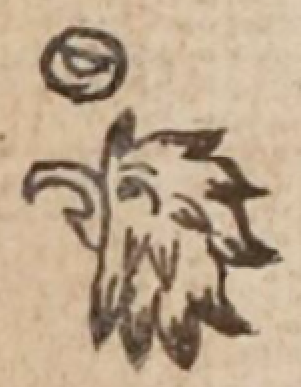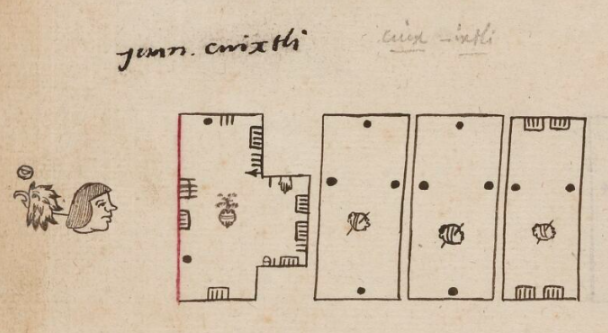Cuixtli (Verg10v)
This black-line drawing of the compound glyph for the personal name Cuixtli (“Kite,” attested here as a man’s name) shows a profile view of the head of a small bird of prey (the cuixtli), which is called a "kite" in English. It has wispy tufts of feathers, its eye is open, and its beak is open. It looks like an eagle (cuauhtli), but the writer has provided a stellar or starry eye (ixtli, which rhymes with cuixtli), as a phonetic indicator to help the reader know the intention behind the bird's head is not cuauhtli. The eyelid of the stellar eye is white, unlike sometimes.
Stephanie Wood
1539
Jeff Haskett-Wood
It is difficult to say which part should be read first, but perhaps the bird. The eye above it is just to clarify or support the reading; so, alternatively, it could go first, tipping off the reader about what is to come.
ojos, aves rapaces, rapaz, feathers, plumas, nomres de hombres, ave, aves, pájaro, pájaros, pluma,animals, animales

cuix(tli), small bird of prey called a kite, https://nahuatl.wired-humanities.org/content/cuixtli
Milano (un pequeño ave de rapiña)
Stephanie Wood
Codex Vergara, folio 10v, https://gallica.bnf.fr/ark:/12148/btv1b84528032/f28.item.zoom
The non-commercial reuse of images from the Bibliothèque nationale de France is free as long as the user is in compliance with the legislation in force and provides the citation: “Source gallica.bnf.fr / Bibliothèque nationale de France” or “Source gallica.bnf.fr / BnF.” We would also appreciate a citation to the Visual Lexicon of Aztec Hieroglyphs, https://aztecglyphs.wired-humanities.org/.





